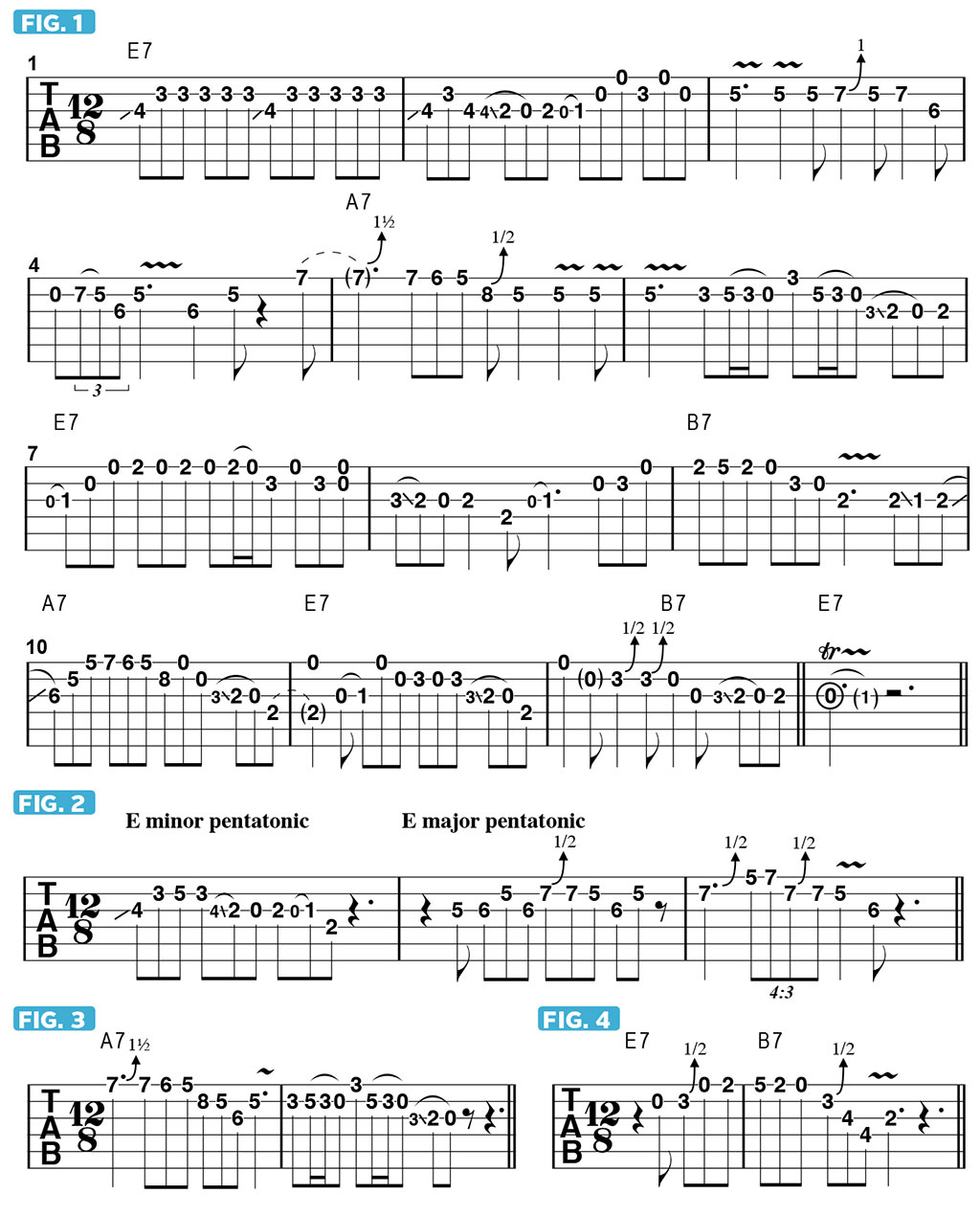Finding Inspiration on Three Adjacent Strings
Applying this construct to any improvised solo will automatically force you away from playing familiar licks and standard melodic “shapes.”
By far the most common question I hear from my students and fellow guitar players alike is, “How do I break away from playing the same old box-position riffs, licks and scale patterns and come up with new ideas?” As I have stated in a few different columns over the years, a great way to force oneself out of playing the same licks and patterns is to restrict one’s solo lines to either one, two or three strings; with multiple strings, one can either apply the approach of sticking with adjacent strings only, non-adjacent strings only, or a combination of the two. Either way, applying a construct like this to any improvised solo will automatically force you away from playing familiar licks and standard melodic “shapes.”
A common term for playing the same old “learned” licks is “letting your fingers do the walking,” or “letting your fingers make the decisions for you.” Neither of these approaches are as good as listening to what you are playing and reacting in the moment to what you have played, while also remaining acutely aware of how the band is responding to your improvised solo. In other words, any soloist is best served if they can hear the whole band at once, and steer the feeling of the solo in accordance to what is happening in the room at every moment. This will keep the music spontaneous and alive and much more engaging for the audience, too.
FIGURE 1 offers a 12-bar solo played over a standard blues shuffle in the key of E, with the solo lines restricted to the top three strings. The majority of the licks are based on the E blues scale (E G A Bb B D), with the inclusion of the major third, G#, when playing over the I (one) chord, E. Incorporating the major third solidifies the relationship between the improvised solo melodic line and the resolutions back to the I (one) chord.
The solo begins with a standard blues “theme” of sliding up to the fifth, B, followed by repeated accents on the b7 (flatted seventh), D, establishing the dominant seven sound of E7. These lines are based on the E blues scale. In bars 3 and 4, I shift to lines based on E major pentatonic (E F# G# B C#) as a way to anticipate the change to the IV (four) chord, A, in bar 5. This works well because two of the notes from E major pentatonic — E and C# — are part of an A triad (A C# E).
Over the B7 chord in bar 9, I switch to a line based on B minor pentatonic (B D E F# A), and then in bar 10 I play a classic Lightnin’ Hopkins lick — one used often by Freddie King and Stevie Ray Vaughan — as a means to resolve pleasingly back to the I chord, E.

FIGURE 2 demonstrates how to balance between E minor pentatonic (E G A B D) and E major pentatonic (E F# G# B C#) when soloing through a 12-bar progression in E. FIGURE 3 focuses on combining E major pentatonic and the E blues scale to play over the IV (four) chord, A7, and FIGURE 4 zeros in on the use of B minor pentatonic over the V (five) chord, B7.
Guitar World Associate Editor Andy Aledort is recognized worldwide for his vast contributions to guitar instruction, via his many best-selling instructional DVDs, transcription books and online lessons. Contact Andy at andyaledort.com.
Get The Pick Newsletter
All the latest guitar news, interviews, lessons, reviews, deals and more, direct to your inbox!
Guitar World Associate Editor Andy Aledort is recognized worldwide for his vast contributions to guitar instruction, via his many best-selling instructional DVDs, transcription books and online lessons. Andy is a regular contributor to Guitar World and Truefire, and has toured with Dickey Betts of the Allman Brothers, as well as participating in several Jimi Hendrix Tribute Tours.
“There are so many sounds to be discovered when you get away from using a pick”: Jared James Nichols shows you how to add “snap, crackle and pop” to your playing with banjo rolls and string snaps
Don't let chord inversions bamboozle you. It's simply the case of shuffling the notes around








![Joe Bonamassa [left] wears a deep blue suit and polka-dotted shirt and plays his green refin Strat; the late Irish blues legend Rory Gallagher [right] screams and inflicts some punishment on his heavily worn number one Stratocaster.](https://cdn.mos.cms.futurecdn.net/cw28h7UBcTVfTLs7p7eiLe.jpg)


